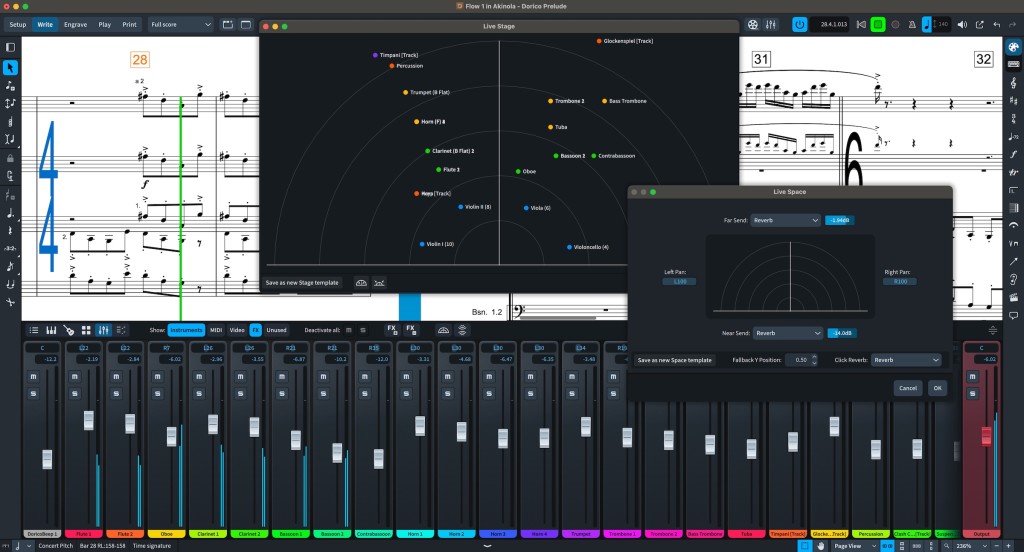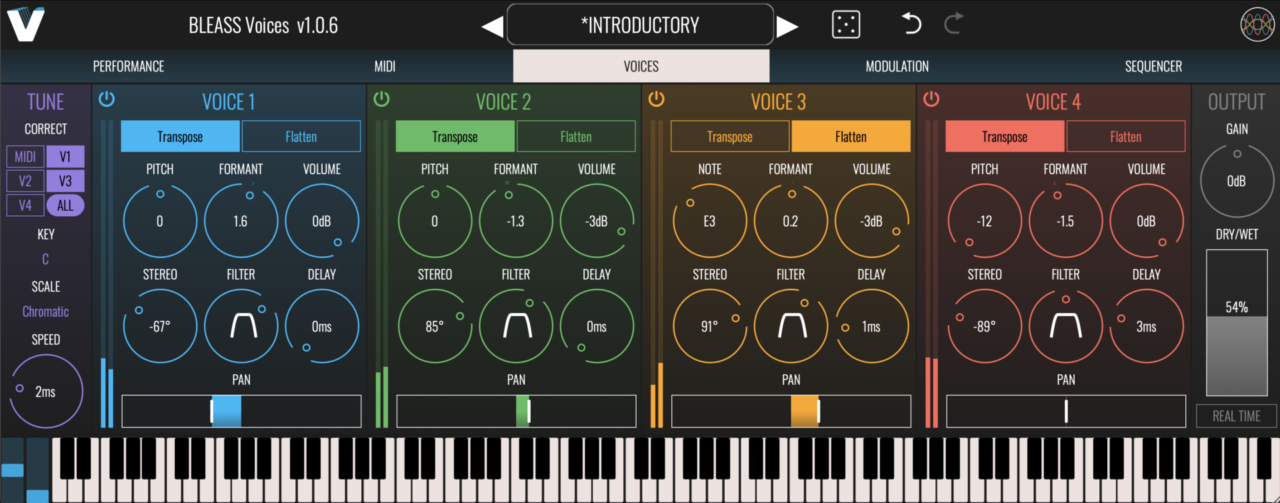Steinberg’s Dorico may be a flagship notation tool in the traditional mold, but frequent updates continue to argue for making this your scoring option of choice. That’s an easy case to be made with the high-end Pro edition if your budget allows – but it’s increasingly true of the Elements and iPad editions, too.
Steinberg announced the arrival of Dorico 5 late last month. There are major enhancements both to playback and scoring. Okay, actually the scoring tweaks are to be more accurate minor improvements – but the kind of little things that, as always, make a big difference while you’re working. I’ll break those down in a bit.
Playback
Steinberg continues to invest in the playback side of Dorico. That’s likely to matter for anyone needing to quickly produce demos, and to share with people who can’t read notation – before you go and hire the players, etc.
Advanced sample library users have always been able to get sophisticated playback results. But not everyone has the time to compose a score and dump a bunch of time into making a virtual playback session even before you get to conducting musicians.
Dorico 5 brings a few tools to bear in that department.

Suffice to say all of these tools continue scoring software’s narrow focus on western music. That’s not to say you can’t use Dorico for other purposes, or that we shouldn’t be talking about what that means in software generally (oooh, weshould) – but I’ll deal with that in another context.
Stage templates and space templates. One way to make virtual playback sound wrong is to leave everything dry and panned-center. Stage templates and space templates provide pre-baked setups for creating stage space both using panning and reverberation. That means the bundled HALion Symphonic Orchestra – neutral / close-miked / unpanned by design – is instantly set up to sound more realistic in various typical instrumental setups.
There are a bunch of defaults, but of course, you can also create your own setups as you need, tailored to your musical personnel and choice of software instruments.
Space templates handle the effect processing side of this; by default they use a single send with a reverb, but you can actually create near and far sends that are more sophisticated if you like.
Live Stage. The new Live Stage window visualizes all those stereo field and depth settings. You can also work in the Live Stage and translate that to a Stage template, so you can work visually.
Pitch contour emphasis. So, this is an interesting one – it’s a new algorithm for playing more musically by looking at musical contour.
Music theory alert – So this research into pitch contour emphasis is a fairly recent development in theory. Steinberg’s Dan Spreadbury says that “there were a few academic papers that we used as the basis of our work on pitch contour emphasis, including Friberg et al. (2006), Cambouropoulos (2001), and Ferrand et. al (2003).”
Groove Agent SE. Steinberg’s own entry-level drummer software is bundled, too, providing an acoustic drum kit recorded at Berlin’s Teldex Studios. That includes the epic reverb chamber in that facility and two mic positions. (The studios are a dream, historically and sonically. I wrote up a tour there for Orchestral Tools. This was basically like getting hired to go to Disney World for the day, as a sound nerd. And yeah, I walked into that reverb chamber, though the sound is more interesting than the space visually!)
Anyway – this gives you a great drum kit plus 400 MIDI patterns played by top drummers. No more horrible General MIDI.
Scrub playback. At last, you can scrub through the score with audible feedback just as with MIDI note editors (including those already in Dorico).
MIDI trigger regions. The other new feature is the ability to trigger MIDI events that aren’t seen in the score.
That’s largely designed for tools like Groove Agent, but I imagine this could be used as a hack for various electroacoustic and other creations, too – and for broadening the applications of Dorico, as I mentioned before.
There are other little tweaks, like the ability to create individual delays for switches in playback, MIDI CC paste improvements, and various other advances.
Instrument editor
This is an essential function – at last, you can edit or define your own instrument definitions in an integrated editor, via the Library > Instruments tool. You can also Change instrument without limitations.
Excepted from both those functions is percussion kits, but Steinberg promises this is coming soon.
Editing
Direct note editing with the mouse. You can now drag notes directly, both in pitch and rhythmic position. (Oh yes, that’s a big one – and, just like the scrub feature, something we’re used to doing in piano roll and other MIDI edit views, both in scoring software and in DAWs.)
Multiple item creation. You can now create multiple items in one go, including across instruments or in different (non-contiguous) positions. That’s another must, and available in some competitors – but really great to have in Dorico, in the context of all the other things this tool does.
They’ve also enhanced how playing techniques are mapped and added, which assists in creating elements like bowing marks (especially across multiple selections).
You also now can create multiple glissandi at once, across non-contiguous selections, plus arpeggio signs, ornaments and trills, rhythmic slashes (for much faster lead sheets), and so on. There are a lot of little details in this feature, so there was presumably a ton of work to make it disappear. Those of us who have used notation tools for a while will have some instant muscle memory – slash – trauma about lots of manual adjustment or repeated tasks, so you likely already know what I mean.
A lot of other enhancements also deal with multiple selections – like pedal line merging.
Other improvements
Rapid-fire, here we go:
- Accidentals work as expected even in microtonal repitching
- Bar numbers over multi-bar rests now provide options for display
- Sub-brackets for violins now give you additional stave indication options
- Chord diagrams and symbols are expanded, have more precise alignment and engraving options, and have various new display options (down to the height for parentheses)
- Dynamic indications are improved, including the niente circle and gap placement (with various options), text on hairpins, and gradual dynamics appearance (the “cresc…” stuff)
- Improved Key Editor
- Lots of lyric enhancements, including to Japanese lyrics, lyric extensions, and hyphens
- Enhanced MusicXML import and export
- More shortcuts / commands for Note Input
- More ornaments
- Interactive Lua scripting support and other Scripting improvements
- Follow playhead switch on the status bar
- Uh… custom rainbow gradients? (There’s a lot more in there…)
The biggest “hidden” feature in Dorico 5 may actually be its font family support. There are some eight new music font families installed by default as part of the growing support across notation software for Standard Music Font Layout (SMuFL) and SIL Open Font License. That includes new handwritten and engraved fonts for various use cases.
Alternate tuning playback is available, too – this uses MIDI pitch bend in place of VST Note Expression. A full exploration of how tuning is handled in Dorico and other tools is – something we should do, separately.
Start with free SE or inexpensive Elements
Dorico Pro is indeed at the high end investment-wise – though totally in-line with what a lot of engraving software has cost historically.
But there’s a lot in Elements, including the above improvements, plus a reasonable amount to get started in the totally-free SE. That’s relevant obviously to electronic producers whose notation needs may be light, just as with students or beginners.
In fact, I expect a lot of folks will be surprised at the extent to which the free SE release covers their needs – as long as you don’t need to do a whole lot of engraving customization and you’re writing for is eight or fewer players, SE probably covers you (with some particular caveats, like – oddly, a restriction on key signatures). Even Elements now has a wide arrange of sound libraries, customizable interpretation of scoring details, and now even support for your own music fonts, note spacing, and playback options.
The iPadOS release is similar – and a great pairing with Apple Pencil. Not everyone will even need the In-App Purchase options.
I should also note that Steinberg changed their desktop licensing scheme, so that now you can run with simple activation and no dongle. (You will need macOS 10.12+ / Windows 8+.)




